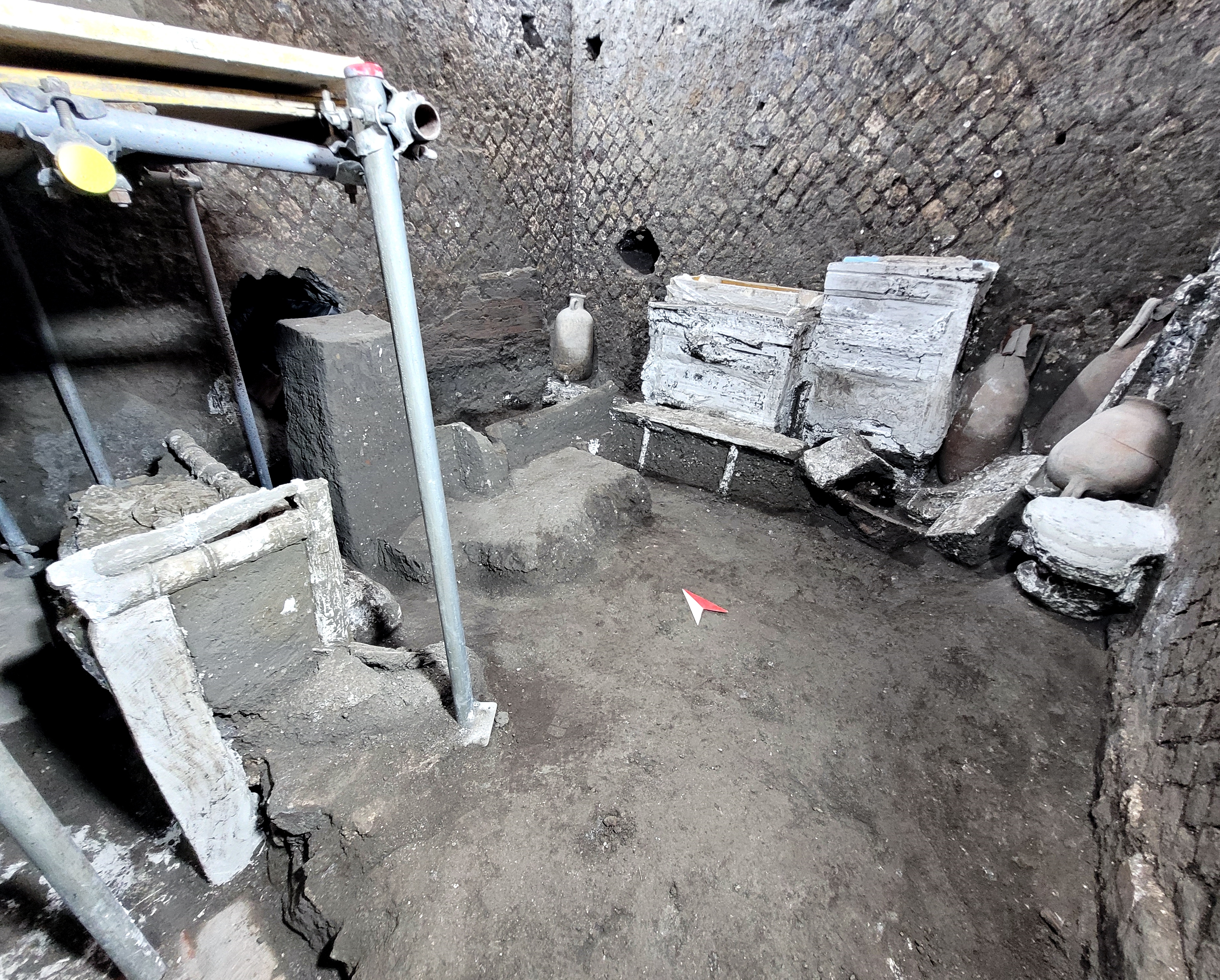A short walk outside the city walls, archeologists have discovered an apartment for the slaves who used to serve the people of Pompeii. The rare discovery is a reminder that Roman life in the big city wasn’t all pizza, parties, and picturesque villas.
The room was found at the Civita Giuliana villa, some 600 meters (2,000 feet) north of the walls of Pompeii. It contained two beds, one without a mattress, two small cabinets, some tools, plus a number of ceramic jugs and vases.
One of these vessels was found under the bed and contained the body of an unfortunate rat, which the researchers say was most likely hiding from the violent wrath of the volcano. The remains of two mice were also discovered in the structure’s ruins.
The ancient Roman city of Pompeii was decimated in 79 CE when the volcano Mount Vesuvius erupted, killing thousands of people in the city and nearby settlements of Herculaneum, Oplontis, and Stabiae.
The eruption showered Pompeii and the surrounding towns in over 6 meters (19 feet) of ash and other volcanic debris. Devastating as it was, it preserved the settlements for centuries, providing modern-day researchers with an unbelievably clear insight into the daily life of ancient Rome.

Another look of the slave quarter’s room.
Image credit: Pompeii Archeological Park.
Slavery played a significant role in the Roman world – and Pompeii was no exception. Some historians argue that 10 to 20 percent of the Roman Empire’s population was enslaved. Many would be working as manual laborers and household servants, but there is also evidence that some were highly autonomous and would manage other enslaved people, known as vicarii.
This latest discovery at the site is especially significant as the life of slaves is not often documented. Announcing the findings, Italy’s Ministry of Culture says that the rodent-ridden room shows how the enslaved people of Pompeii lived in meager and unhygienic conditions.
However, they added that they didn’t find any evidence of locks or chains to restrain the room’s inhabitants, suggesting this system of servitude was kept in place through social pressure and hierarchies, rather than physical restraints and violence.
“What presents itself here it is the social structure of the servitude that was supposed to prevent escapes […] because there are no traces of grates, padlocks, and shackles. It seems that the control took place mainly through the internal organization of the servitude, and not through barriers and physical constraints,” Gabriel Zuchtriegel, the director of the Archaeological Park of Pompeii, explained in a statement.
“We know that the owners [of this house] had various privileges, including the possibility of forming a family, albeit without any legal protection, to bind some slaves more closely to the villa,” he added.
Source Link: Ancient Roman Slave Quarters Show A Darker Side Of Pompeii